by Jude Rogers.
7. Water Lines
Today is the day that I actually turn 32. It has been the working week from hell, all 6am starts and drowsy midnight finishes. My birthday candles have truly been burnt at both ends – the only walk I’ve done from my bed to the bus stop to my books.
I have spent all day, head down, working hard in the British Library, but now it is 4.30pm and I have done my lot. My boyfriend, Dan, has been working nearby, and we have arranged to go and see an installation at Somerset House, where a sound artist, Bill Fontana, has recorded the noises of the Thames – the loll, crash and boom of the heavy, wet water – and projected them through the building’s subterranean spaces. My legs are listless from a week being stuck under my desk, so I walk down to meet him.
As I leave, I look at the Paolozzi sculpture sitting in the British Library piazza, casting William Blake’s famous print, Newton, into terrifying bronze. Under the grey, weathered concrete of the neighbouring Novotel, it looks like an old man cowering before the new world, something that this ageing dear can understand all too well.
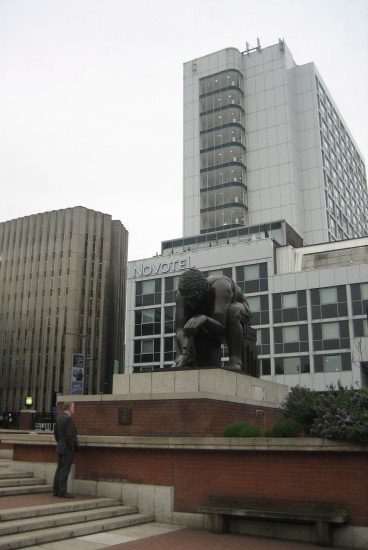
a. I love the back streets of Kings Cross. It’s an area that has always maligned, but there are lots of strange treasures nestled within it. I turn off Euston Road, to Mabledon Place, and then Cartwright Gardens reveals itself. An eerie red-bricked block gathers moss behind the locked gate – more than likely the gents toilets, although they look like a portal to another world. 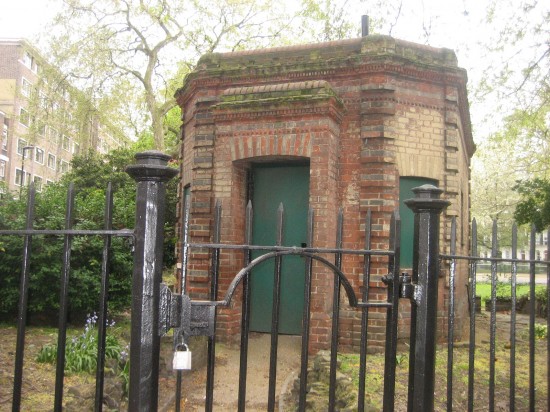
Further along, stands the statue of John Cartwright himself, the famous political reformer, who campaigned for the right to vote. Given it is seven short days before the general election, I feel uneasy that he is sitting here behind bars. 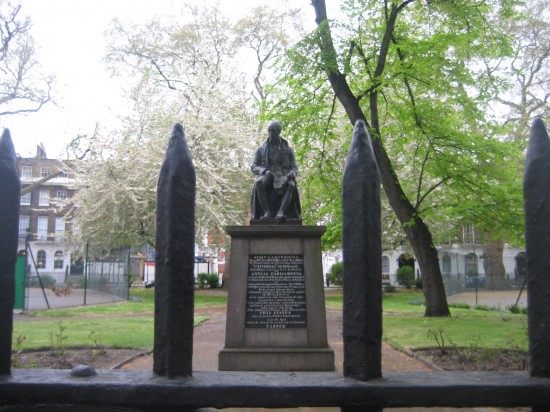
b. Dan calls. He’s on Gower Street. I speed down to Russell Square, and arrange to meet him there. I walk past the glorious hotels on Cartwright Gardens’ south side, with their names – like Avonmore and Mentone – captured in stark motel metal. I shuffle down the loveliness of Marchmont Street, all colours and clamour and second-hand book shops.
Then I pass the Brunswick Centre to my left, done up so very recently, but already showing the effects of weather and age. I glance down at my grown-up hands, see the lines starting to etch themselves. I quickly carry on.
c. It is 4.45pm. On Herbrand Street, I pass a beautiful Art Deco building that I have never seen before. The sign says it belongs to McCann Erickson, an advertising agency, quite fitting if you think about the street that it sits on. They recently did the advert when Bonnie Tyler bursts out of a supermarket car park, rising like an angel as she extolled the virtues of Mastercard. This fiery-haired bombast doesn’t fit quite so well with a building that once used to be a garage for Daimlers – cars just as beautiful, shiny and subtle as its home.
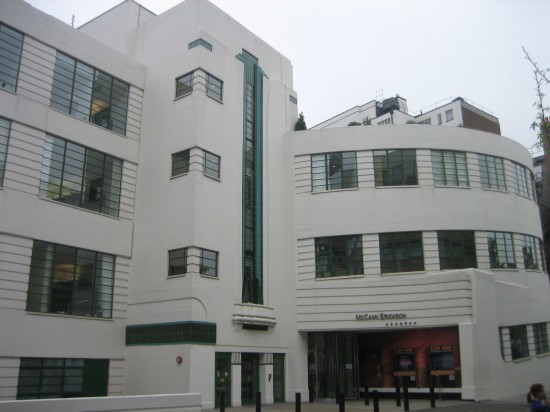
I find it comforting that something so old can still look so very lovely.
At 4.52, I find Dan outside the Imperial Hotel. At 4.52, 32 years ago, I arrived in the world. I know this because it was a Saturday, and Swansea had just won their play-off to go up to the third division, and my father had spent the afternoon running in and out of the labour ward. I appeared, quite neatly, just as they succeeded, which I’m sure was delightful. I am simply grateful I wasn’t called John Toshack Rogers.
Dan and I celebrate the year by gabbing our way down to Holborn. We pass the entrance to the Tramway Tunnel, long closed, and I run to the middle of the road to try to take a picture. It looks terrible. Instead, I return to the pavement and find some street signs from the early 20th century, looking much prettier on the red bricks.
Around the corner, I find two men taking a picture of a blue plastic barricade, and realise there are other people as weird as I am.
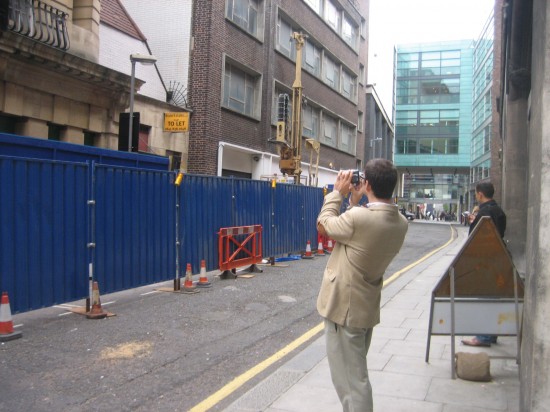
I take their picture too.
d. It’s 5pm down the Kingsway, and the bustle doesn’t stop. We eventually get to the Aldwych, and the lovely bulk of Bush House, where the BBC World Service has been based for eighty years. When it was made, it was the most expensive building in the world. Next to it, a telephone exchange presents to me a poster of a play called Lady Di Lives! Here is Britain on a pavement, in a nutshell, I fancy, both beautiful and barmy.
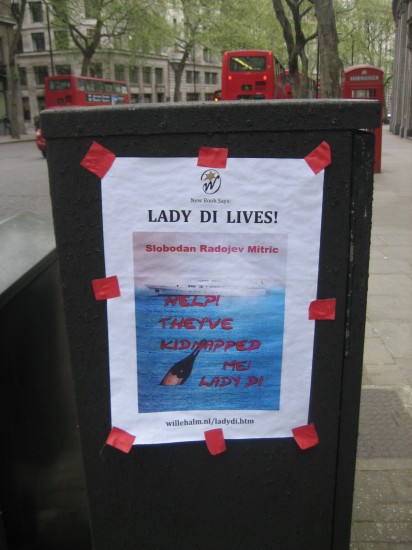
e. Past the disused Strand underground station, where I once went to a party where Will Self told me he liked my magazine about London – making me have to lean against a wall for a few minutes, and gulp a large glass of white wine – we reach our destination.
Somerset House lightens in the sun as its water fountains dance. Across the forecourt, grey-haired man with a jaunty neckerchief tells us to go to the toilet first so we don’t need to wee.
We descend the steps, and find the sounds of the river in the shadows. Projections of buoys accompanying low rumbles and hums, and images of ropes move with the lapping of the tides.
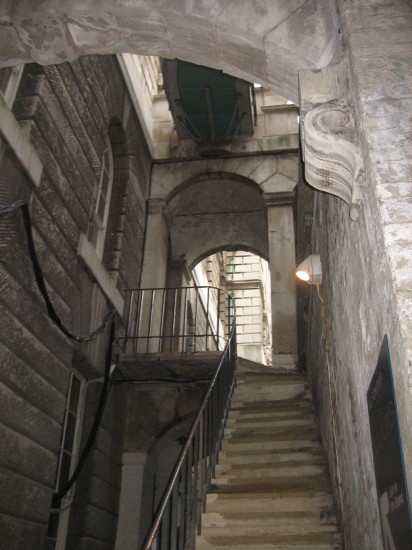
Then, in the belly of this beast, without warning, we find the Deadhouse.
It is too dark to take pictures. A bass note pounds along the walls, and I find the secret gravestones. They mark the lost lives of 17th century courtiers. Latin inscriptions fade into the dust, and I resist tracing the words with my fingers.
I stay there just long enough to spook myself, to feel the inevitable all around me, and walk out into the light.